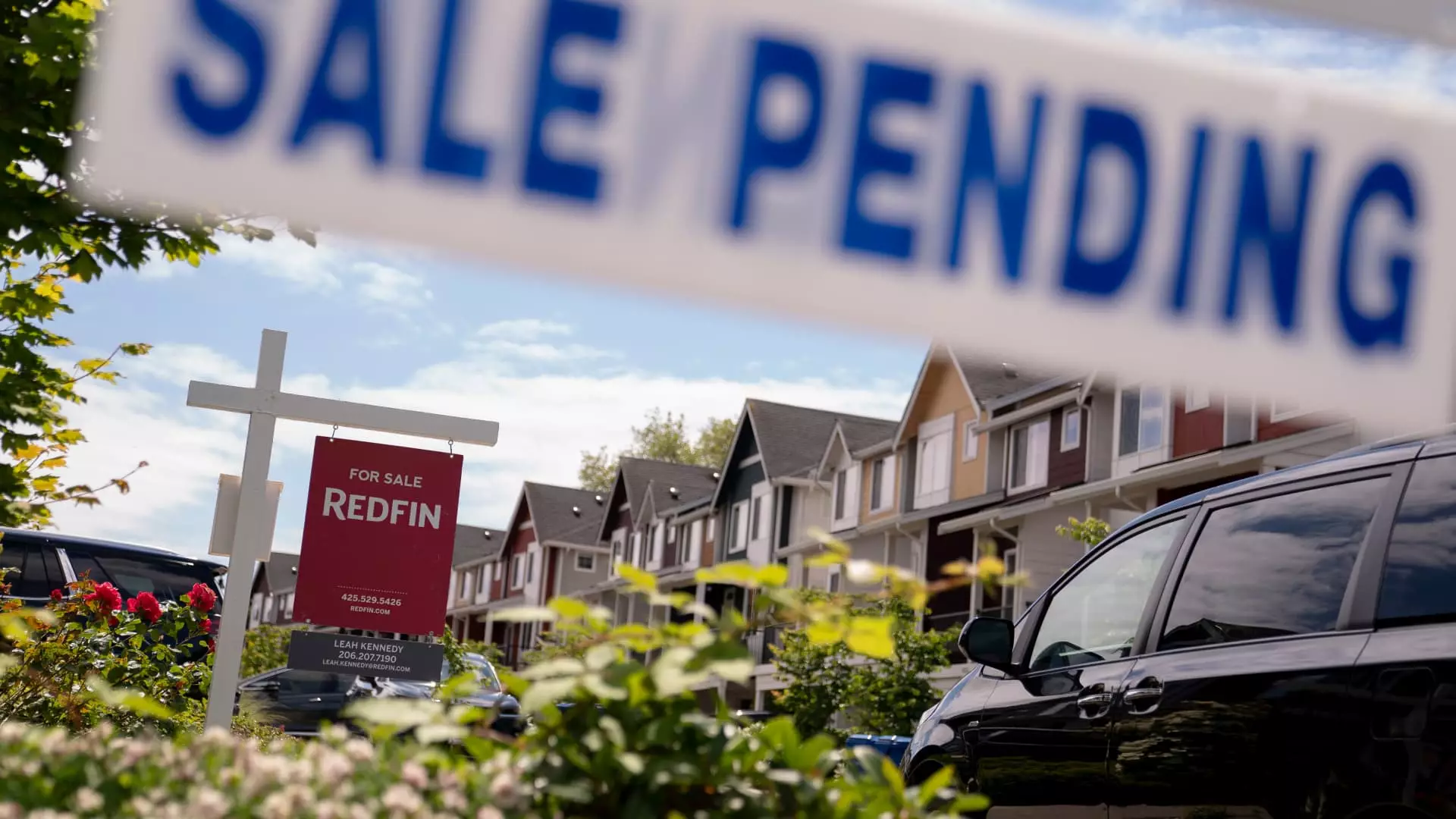In a stark turn of events, mortgage rates have soared to the highest levels seen since February, casting a shadow of uncertainty over the housing market. According to the Mortgage Bankers Association, the average interest rate for a 30-year fixed mortgage has surged to 6.81%. This spike reflects a broader landscape characterized by economic volatility, making it increasingly challenging for potential buyers. With an 8.5% drop in overall mortgage applications reported just last week, it’s evident that many are reconsidering their plans in the wake of these rising costs.
The combination of heightened mortgage rates and increased inventory on the market creates a juxtaposition that is both perplexing and concerning. Typically, lower interest rates draw in bustling buyer activity, yet here we find ourselves amidst a backdrop of financial hesitance. The situation is compounded by home prices that remain stubbornly high, forcing buyers into precarious positions—spurring a rise in risky loans as they scramble for alternative financing options.
Buyers Opt for Riskier Loans: The Resurgence of ARMs
In response to this challenging financial climate, more homebuyers are leaning toward adjustable-rate mortgages (ARMs) as a strategy to mitigate the financial impact. With initial rates hovering around 6%, the allure of lower monthly payments on ARMs is tempting many. This decision, however, is laden with risk, as ARMs bear the potential for future rate hikes that could exacerbate borrowers’ financial burdens. It’s troubling to think that, amid such economic uncertainty, buyers may be forced into making choices that jeopardize their long-term financial stability.
According to Mike Fratantoni, the senior vice president and chief economist at the MBA, the ARM share of mortgage applications surged to its highest point since November 2023, reflecting a stark shift in buyer sentiment. Nearly 25% of applications last week were for ARMs, indicating a significant trend toward riskier borrowing strategies. While this may provide momentary relief through lower interest rates, the catastrophic potential of future rate adjustments cannot be ignored.
The Dichotomy of Demand and Supply
Despite the prevailing pessimism, it’s noteworthy that overall demand from homebuyers is still 13% higher than this time last year. However, the increased inventory—30% more homes available for purchase now compared to one year ago—has not translated into a proportional rise in sales. This misalignment raises critical questions about pricing dynamics and buyer psychology. Are we witnessing a situation where fear and economic apprehension overshadow the potential benefits of increased inventory?
This compounding of factors leads me to speculate that the housing market is not simply reacting to interest rates but is, in fact, in a state of fundamental turmoil. Buyers may be seeing larger selections of homes, yet their reluctance to buy is a stark indication that many perceive the road ahead as fraught with uncertainty.
Looking Ahead: Volatility is Here to Stay
While there was a slight easing in mortgage rates to start the current week, industry experts warn against complacency. The market has shown signs of initial calm, yet the underlying volatility hints that what goes up may quickly come down—and vice versa. Matthew Graham, the chief operating officer at Mortgage News Daily, underscores that these fluctuations make it unwise to assume the stability of current rates. This serves as a reminder that potential homebuyers must remain vigilant and informed as they navigate these choppy waters.
In a climate where financial decisions are increasingly complicated, one wonders whether the allure of homeownership will fade for many young buyers motivated by the long-term benefits of owning property. The increase in risk-averse behavior and hesitance, tied closely to the current economic landscape, will undoubtedly shape the future of the real estate market.
As we venture further into this turbulent period, adherence to practicality and an understanding of market dynamics will be paramount. Buyers should engage with financial experts and thoroughly evaluate their options, weighing potential risks against the prospect of achieving the American dream of homeownership. The path ahead may be fraught with challenges, but it is one that can lead to prosperity for those willing to navigate the murky waters of the current mortgage landscape.

